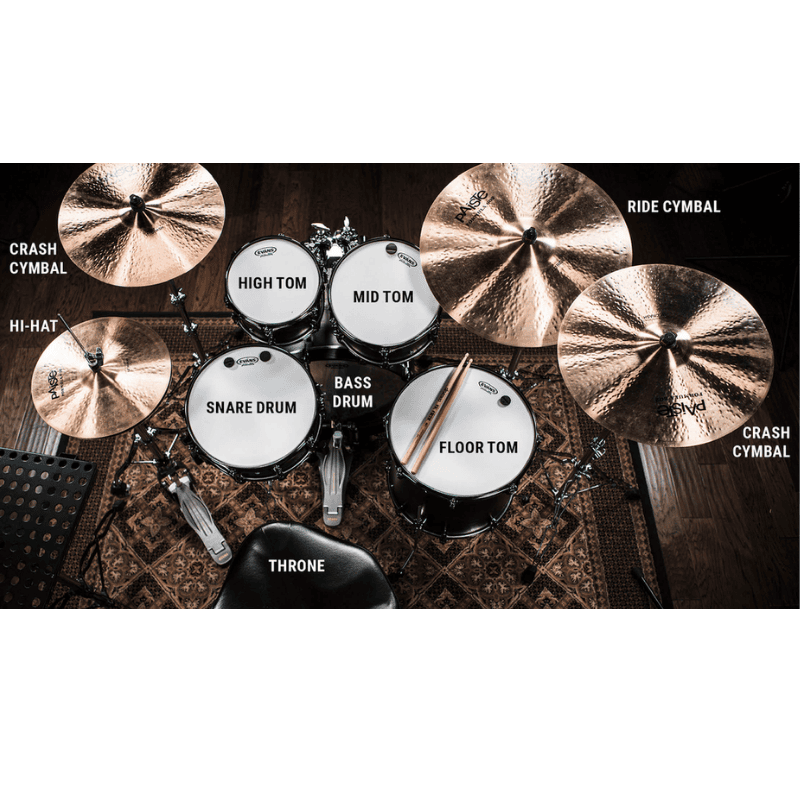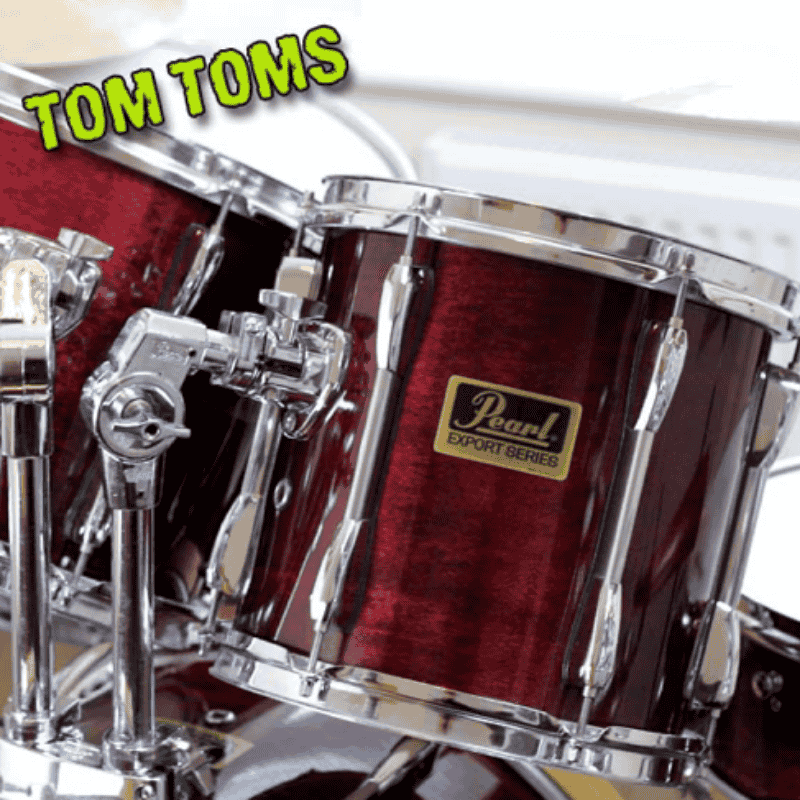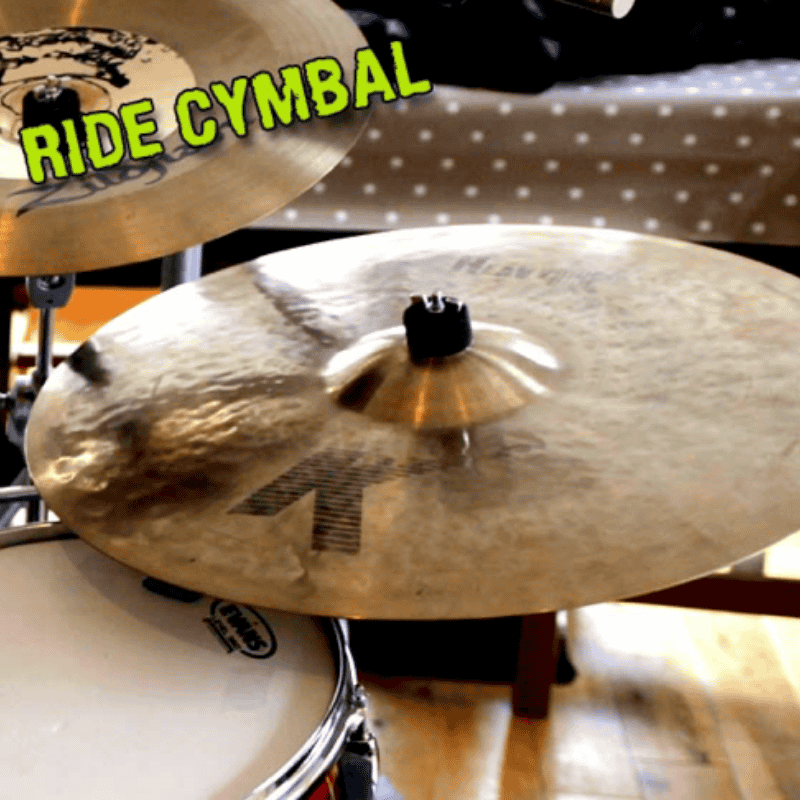Beginner’s Guide to Drum Parts – Understanding the 5-Piece Drum Set
🥁 What Is a 5-Piece Drum Set?
A “5-piece” drum set refers to the number of drums in the kit—not including cymbals or hardware. It typically includes:
1 Bass Drum (Kick)
1 Snare Drum
3 Toms (High, Mid, Floor)
Cymbals like the hi-hats, ride, and crash are not counted in this number, but they’re essential to the full setup.
Why 5 pieces?
This configuration gives you everything you need for a wide range of musical styles—from rock to jazz to funk—while still being manageable for beginners to set up and play.
🎶 Drum Kit Components Explained
1. Bass Drum (Kick Drum)
Role: The foundation of the beat, typically playing on beats 1 and 3.
Played with: A foot pedal.
Size: Usually 20"–22" in diameter.
Setup Tip: Add a pillow or foam inside to reduce unwanted resonance and control volume.
Pro Tip: Want faster bass patterns? Try a double kick pedal, used in metal, fusion, and funk styles.
2. Snare Drum
Role: Provides the sharp, “crack” sound of the backbeat (usually beats 2 and 4).
Key Features:
Snare wires under the bottom head create a buzzing effect.
Controlled by a throw-off switch and tension knob.
Commonly 14" in diameter.
Fun Fact: The snare is the most expressive drum—it can whisper with ghost notes or shout with rimshots.
3. Toms (High, Mid, Floor)
Role: Used in fills, rolls, and transitions between sections.
Common Sizes:
High Tom: 10"–12"
Mid Tom: 12"–13"
Floor Tom: 14"–16"
Types:
Mounted toms connect to the bass drum or cymbal stands.
Floor toms stand independently on three legs.
Tip: Experiment with tuning each tom differently to create musical pitch variation in your fills.
4. Hi-Hat Cymbals
Role: Keeps time, adds rhythmic texture.
Setup: Two cymbals mounted on a stand controlled by a foot pedal.
Playing Techniques:
Closed (tight, crisp sound)
Half-open (sizzle effect)
Open (ringing wash)
Foot splash (close and release for a fast burst)
Pro Tip: The hi-hat is the most nuanced cymbal—learn to vary your touch and foot pressure.
5. Crash Cymbal
Role: Accents used at musical transitions or climaxes.
Size: Typically 14"–18"
How to Play: Hit with a glancing blow using the shoulder of the stick for a powerful "crash" sound.
Pro Tip: Don’t overuse it—save your crashes for moments that need extra emphasis.
6. Ride Cymbal
Role: Used for steady patterns, especially in jazz, funk, and pop.
Size: Often 20"
Sounds:
Bow: “ping” sound
Bell: sharper, more cutting tone
Tip: Avoid crashing it unless it’s labeled as a "crash/ride" cymbal to prevent damage.
🎧 Why Knowing Your Kit Matters
Understanding the drum kit’s layout isn’t just about gear—it’s about learning how to use each part musically.
✅ Helps you set up your drums correctly
✅ Makes practice more effective
✅ Gives you confidence to learn songs
✅ Prepares you for applying technique from lessons
👨🏫 Learn to Play Your Kit the Right Way
At Drum Lessons In Home, I work with beginners across the South Bay (Redondo Beach, Torrance, Gardena, Manhattan Beach, and Palos Verdes) to help them:
Learn stick grip and posture
Read basic drum notation
Develop independence between limbs
Play their first beats and fills
No drum set? No problem. I’ll bring practice tools to your home to help you get started.
📞 Call David Montoya at 310-502-4413
🌐 www.drumlessonsinhome.com







